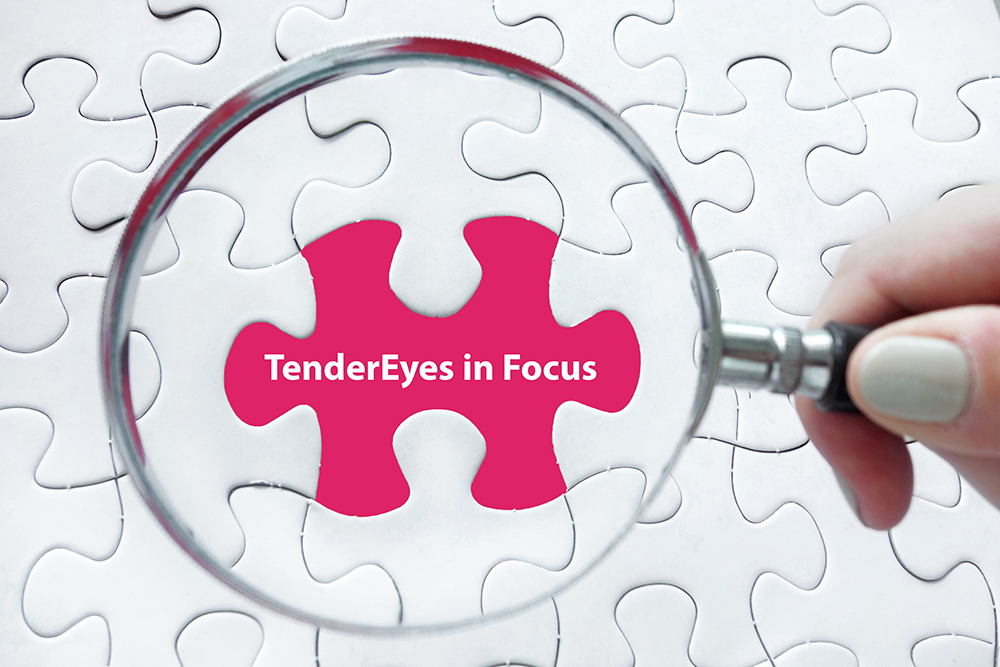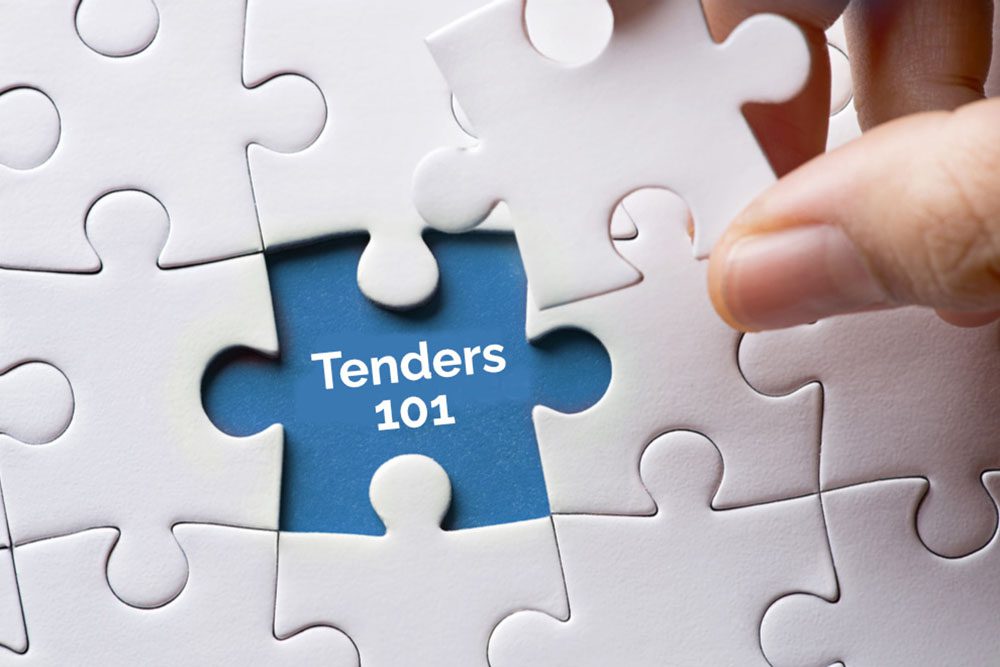In this 3rd instalment of the TenderEyes 4 Cs Model for mastering better bid management, we look at ways to incorporate the methodology within the TenderEyes software. This will help ensure your teams consistently apply the framework to the bid process, activities and decisions.
We discuss each of the 3 key stages of the bid journey, namely sourcing and qualifying opportunities, managing knowledge and compiling bids. And show how the 4 Cs model can easily be incorporated within functions of the 3 core TenderEyes modules used to support your teams, content and activities.
Of course, other business methodologies and frameworks can equally be applied to further enhance your bid processes, decisions and results.
What is the TenderEyes 4 Cs Model?
We first introduced the 4 Cs Model in a blog published in November 2023, which focused on its application to help master bid strategies. In Part 2 of the series posted in January 2024, we focused on using the 4 Cs model to improve tender responses.
The 4 Cs model consist of 4 elements: compliant, competitive, compelling and convincing, which can be applied to multiple aspects of bid management.
This includes strategic and tactical decisions as well as activities across the whole bid journey from sourcing and qualifying tender opportunities to compiling and submitting bids and delivering won contracts. The model can also be applied to performance analysis and improvement plans.
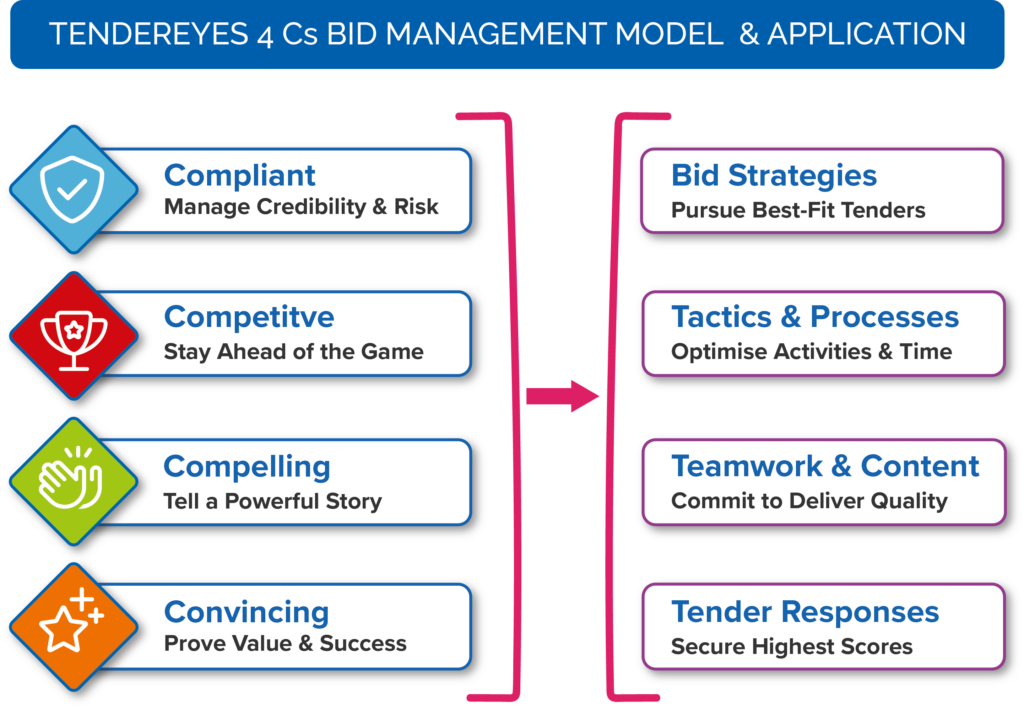
Now let’s see how we can incorporate the 4 Cs model within the TenderEyes software to master the bid process.
Bid Process: Sourcing Tender Opportunities
This starts with the development of your targeting and pursuit strategies, which of course can be developed using the 4 Cs model. These strategies need to ensure your pursuit activities are focused on prioritising your best-fit tender opportunities.
Ensuring your opportunity sourcing and qualification decisions are aligned to these strategies is paramount to achieving bid success. Incorporating the 4 Cs model as part of this process and within the TenderEyes Opportunities Manager module will assist your Sales Team in adopting and being consistent in their decision making.
TenderEyes Opportunity Manager
Source Classifications: Agree and regularly review and update your procurement codes, keywords and geographies to ensure they are aligned to your pursuit objectives, strategies and goals. Your filtered Contract Notice Alerts which automatically populate within TenderEyes are then better matched to your product and service offerings.
- Decision Gates: Allow you to set up a series of questions that your Sales Team need to answer in order to qualify opportunities. Each question can be scored with a benchmark number assigned to qualify opportunities in or out.
This may follow a recognised sales model such as BANT or SCOTSMAN. But can also incorporate questions based on the 4 Cs Model, such as:
-
- Compliant: Is it aligned to our bid strategies and goals? Will it secure a profit or strategic win? Do we have the capacity to deliver a strong bid submission?
- Competitive: How many competitors are likely to bid? How competitors bid for the previous contract if a renewal? Do we have a strong differentiation against the competitors?
- Compelling: What are the win probabilities? Did we win or lose it last time? Do we have a strong story to tell?
- Convincing: Do we have case studies, testimonials and references for this sector?
- Approvals: TenderEyes allows you to assign approvers and send automatic approval requests. Include check boxes for the 4 Cs model to confirm the pursuit decision meets these strategy and qualification criteria.
- House Rules: Incorporate slides that guide your Sales Team through the qualification stages and decisions using the 4 Cs Model.
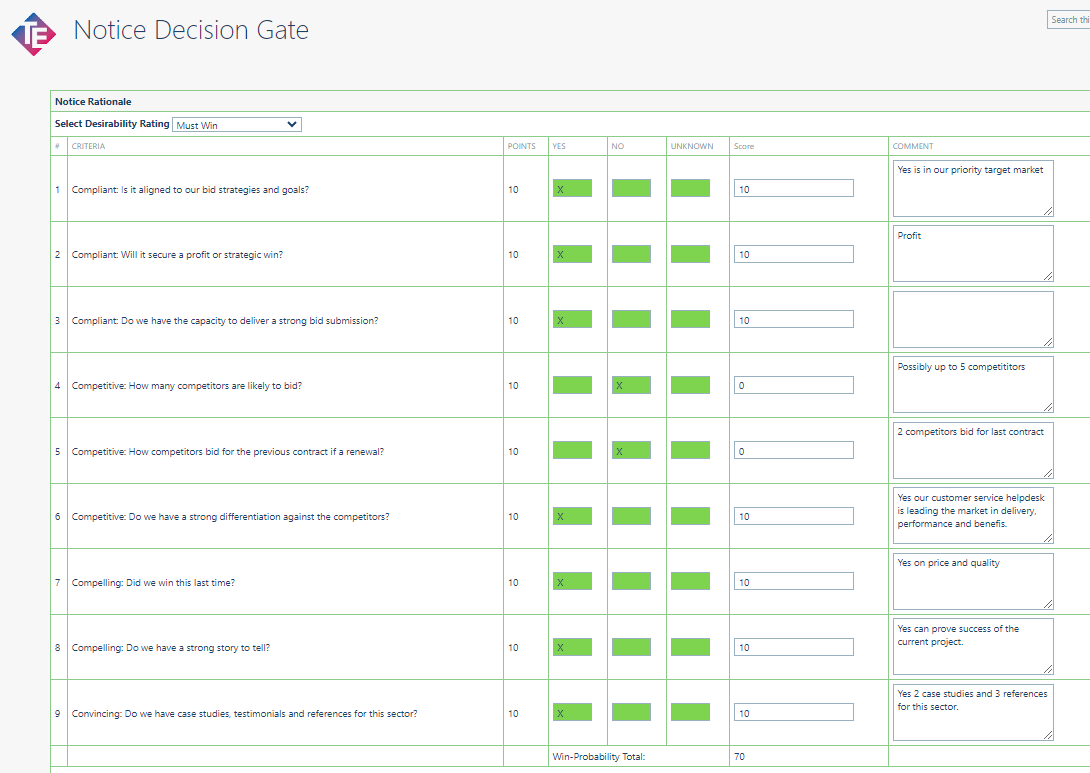
Bid Process: Managing Tender Content
With content such a critical part of the bid process, it is essential that it is easily accessible, kept up-to-date and accurate. Providing a central source of standard business information, documentation and standard tender questions and answers will make it much quicker and easier for your Bid Team and Subject Matter Experts to compile tender responses and submissions.
TenderEyes Knowledge Bank acts as a dynamic Bid Library with powerful content management and editing tools. Building the 4 Cs model into the solution will help content creators develop better quality tender responses that can secure higher evaluation scores and win more business.
TenderEyes Knowledge Bank Features
- Data Metadata: Better manage your content with content ownership, versioning, status, creation, update and expiry dates. This will help ensure your content meets the compliant element of the 4 Cs Model.
- Workflows: Create automated information and update requests and reminders to ensure content remains valid and compliant. Requests can also include reminders to use the 4 Cs Model as a framework for content creation.
- Q & A Status: Include conformity of content with the 4 Cs Model through the review and updating process with check boxes for each element.
- Approvals: Include check boxes for the 4 Cs model for Subject Matter Experts to sign off 4 Cs aligned content.
- House Rules: Incorporate slides to demonstrate 4 Cs considerations for compiling tender content and standard responses.
Bid Process: Compiling and Submitting Tenders
This is the most crucial stage of the bid process and requires time and skill to compile tender responses that secure high evaluation scores and ultimately win you the contract.
TenderEyes Project Workspace provides an ideal environment to project manage the complexities of people, activities and content involved in the process. Incorporating, the 4 Cs Model within the solution provides a strong framework for Bid Teams and Subject Matter Experts to finesse tender responses and submissions.
TenderEyes Project Workspace
- Project Kick Off and Progress Meetings: Automated notifications can include the 4 Cs Model as a formal agenda item to ensure discussion and consideration.
- Win Themes: Help to identify the key elements that need to be considered in being able to win a tender. This can be information gleaned from your Sales Team or the procuring agency documentation. It could also include the 4 Cs Model to ensure consistent consideration of each element is given to the project.
- Scoring Methodology: This will normally consist of the procuring agency’s scoring methodology. You could also include a 4 Cs internal evaluation methodology for testing the quality and improving tender responses before submission.
- Project Scores: This allows you to record internal evaluation and actual scores against each section or question of the tender. You will then be able to compare your internal evaluation scores and responses against actual scores and make adjustments and improvements.
- Workflows: Set up automated workflows for task setting and reminders with standard email to remind people to consider 4 Cs when contributing to the tender creation stage.
- Approvals: Ensure proper approval and sigh off in place to manage risk and compliance with check boxes for the 4 Cs elements.
- Check List: Your internal project check list for compliance could include the 4 Cs elements.
- House Rules: Incorporate slides to demonstrate adoption of the 4 Cs framework for compiling and approving tender responses and submissions.
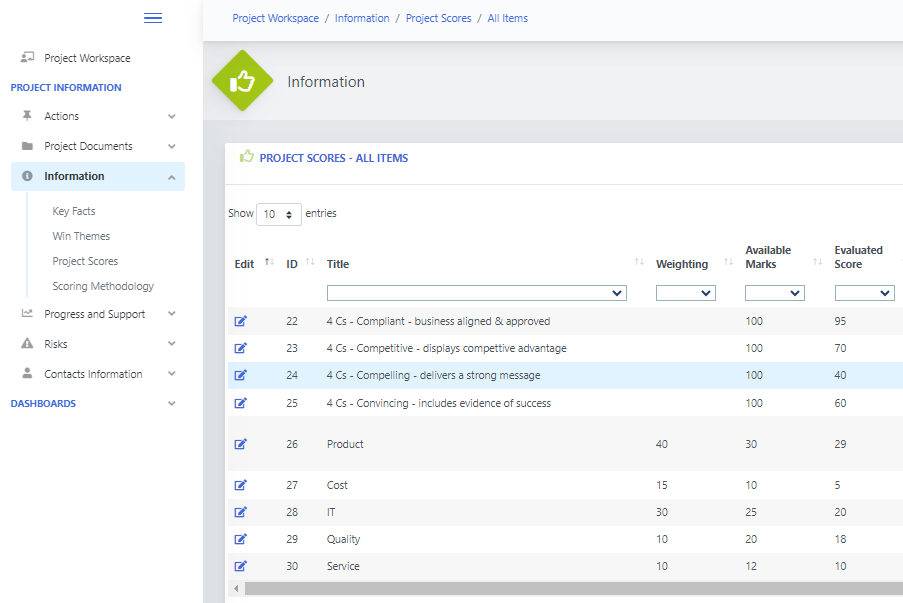
Benefits of the 4 Cs Model in TenderEyes
As you can see above the 4 Cs model or in fact any other model can easily be incorporated in relevant functions of TenderEyes software. This flexibility and ability to customise allows your organisation to set clear guidelines and frameworks for undertaking bid management activities and decision making.
This delivers consistency in the approach to the bid process. As well as focus on delivering best-fit high quality tender submissions that secure higher evaluation scores and can potentially win you more contracts. It also helps better manage risk factors and submission sign off and approvals.
